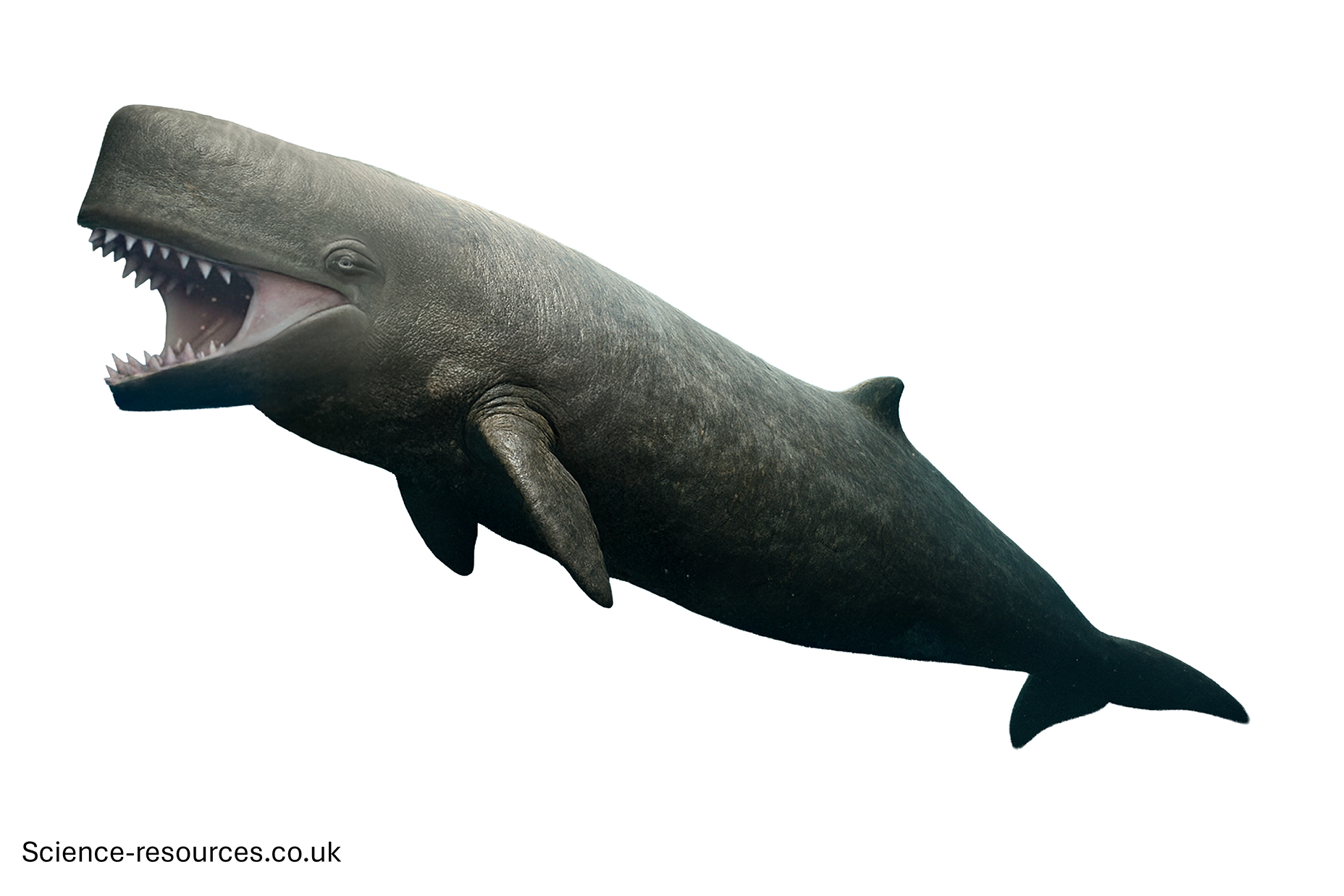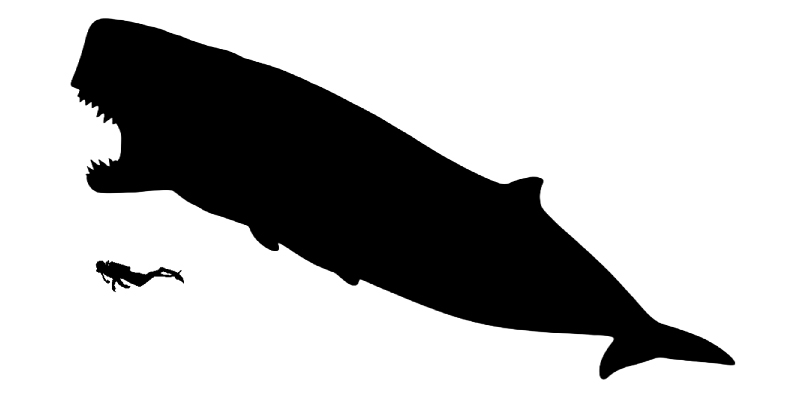Last updated: 4th August 2025
Extinct Animals: Livyatan
Livyatan, an extinct, giant, predatory whale that roamed ancient seas.
Livyatan (Giant Prehistoric Sperm Whale)
 Livyatan
Livyatan
Generative AI Notification: Some elements of this image have been created or enhanced using AI technology. To find out how we create all our prehistoric animals, click here.
What is Livyatan?
Livyatan was a massive species of prehistoric sperm whale that roamed the oceans millions of years ago. It was one of the most fearsome predators of its time, rivalling even Megalodon in power and size.
How big was Livyatan?
Livyatan could grow up to 17–18 metres (56–59 feet) long—about as long as Megalodon and three times longer than a modern orca! It is estimated to have weighed around 50 tonnes.
What did Livyatan eat?
Livyatan was a carnivore, hunting large prey including other whales. It had enormous jaws armed with giant, sharp teeth, some of the biggest of any known animal, which were perfect for biting through thick bones and tough flesh.
Livyatan appearance
Livyatan looked like a super-sized modern sperm whale but with a more robust jaw and enormous, conical teeth in both its upper and lower jaws. Its head was huge, making up about a third of its entire body length!
 Livyatan appearance
Livyatan appearance
Where did Livyatan live?
Fossils of Livyatan have been found in South America, Africa, and Australia, suggesting it lived in warm seas near the equator during the Miocene epoch.
Interesting facts
- Livyatan’s largest teeth could reach up to 36 centimetres (14 inches) long - longer than a standard school ruler!
- It was named after the biblical sea monster “Leviathan”.
- Livyatan may have battled Megalodon for food and territory!
- It is one of the very few whales known to have had such massive teeth in both jaws.

Livyatan Facts
Pronounced: lih-VYE-ah-tan
Name Means: “Leviathan” (a mythical sea monster)
Length: Up to 18 metres (59 feet)
Weight: Up to 50,000 kilograms (50 tonnes)
Diet: Carnivore (meat-eater)
Time: Miocene Epoch (about 13 to 12 million years ago)
Fossils Found: South America, Africa, Australia
Which family of animals did Livyatan belong to?
Livyatan belonged to the family Physeteridae, the same family as modern sperm whales. However, it was much bigger and more powerful than any whale alive today.
What other animals lived at the same time as Livyatan?
Livyatan shared its seas with Megalodon, ancient dolphins, large sea turtles, and other giant marine mammals and sharks during the Miocene epoch.
Livyatan FAQ
Q1: What was Livyatan?
A1: Livyatan is an extinct species of giant predatory sperm whale that lived millions of years ago. It was one of the top predators in the ancient oceans.
Q2: What did Livyatan look like?
A2: Livyatan looked similar to a huge sperm whale, but with a much bigger jaw and enormous teeth in both jaws.
Q3: How big was Livyatan?
A3: It could reach up to 18 metres (59 feet) in length and weighed up to 50 tonnes.
Q4: What did Livyatan eat?
A4: Livyatan hunted large marine animals, especially other whales and possibly giant sharks.
Q5: Where did Livyatan live?
A5: It lived in warm, ancient seas near the equator, with fossils found in places like Peru and Australia.
Q6: When did Livyatan go extinct?
A6: Livyatan went extinct about 12 million years ago, possibly due to changes in climate and the disappearance of its main prey.
Q7: How strong was Livyatan’s bite?
A7: Its bite was extremely powerful, strong enough to break the bones of other whales!
Q8: How is Livyatan related to modern animals?
A8: Livyatan is related to modern sperm whales, but it was much bigger and had more massive teeth.
Q9: Who discovered Livyatan?
A9: Livyatan was first described by scientists in 2010, after fossils were discovered in Peru.
Q10: Are there any complete skeletons of Livyatan?
A10: Only parts of the skull, jaw, and teeth have been found, as the rest of the whale's skeleton is rarely preserved.
You may also be intrested in:
- Extinct Animals: A-Z
- Dinosaurs: A-Z
Tags: How big was Livyatan, Livyatan size, where did Livyatan live, how long was Livyatan, what does Livyatan mean, Livyatan facts
Previous: Indricothere
Up next: Macrauchenia
© 2012 science-resources.co.uk. All rights reserved | Design by W3layouts
Extinct Animals: Livyatan
Livyatan, an extinct, giant, predatory whale that roamed ancient seas.
Livyatan (Giant Prehistoric Sperm Whale)
 Livyatan
Livyatan
Generative AI Notification: Some elements of this image have been created or enhanced using AI technology. To find out how we create all our prehistoric animals, click here.
What is Livyatan?
Livyatan was a massive species of prehistoric sperm whale that roamed the oceans millions of years ago. It was one of the most fearsome predators of its time, rivalling even Megalodon in power and size.
How big was Livyatan?
Livyatan could grow up to 17–18 metres (56–59 feet) long—about as long as Megalodon and three times longer than a modern orca! It is estimated to have weighed around 50 tonnes.
What did Livyatan eat?
Livyatan was a carnivore, hunting large prey including other whales. It had enormous jaws armed with giant, sharp teeth, some of the biggest of any known animal, which were perfect for biting through thick bones and tough flesh.
Livyatan appearance
Livyatan looked like a super-sized modern sperm whale but with a more robust jaw and enormous, conical teeth in both its upper and lower jaws. Its head was huge, making up about a third of its entire body length!
 Livyatan appearance
Livyatan appearance
Where did Livyatan live?
Fossils of Livyatan have been found in South America, Africa, and Australia, suggesting it lived in warm seas near the equator during the Miocene epoch.
Interesting facts
- Livyatan’s largest teeth could reach up to 36 centimetres (14 inches) long - longer than a standard school ruler!
- It was named after the biblical sea monster “Leviathan”.
- Livyatan may have battled Megalodon for food and territory!
- It is one of the very few whales known to have had such massive teeth in both jaws.

Livyatan Facts
Pronounced: lih-VYE-ah-tan
Name Means: “Leviathan” (a mythical sea monster)
Length: Up to 18 metres (59 feet)
Weight: Up to 50,000 kilograms (50 tonnes)
Diet: Carnivore (meat-eater)
Time: Miocene Epoch (about 13 to 12 million years ago)
Fossils Found: South America, Africa, Australia
Which family of animals did Livyatan belong to?
Livyatan belonged to the family Physeteridae, the same family as modern sperm whales. However, it was much bigger and more powerful than any whale alive today.
What other animals lived at the same time as Livyatan?
Livyatan shared its seas with Megalodon, ancient dolphins, large sea turtles, and other giant marine mammals and sharks during the Miocene epoch.
Livyatan FAQ
Q1: What was Livyatan?
A1: Livyatan is an extinct species of giant predatory sperm whale that lived millions of years ago. It was one of the top predators in the ancient oceans.
Q2: What did Livyatan look like?
A2: Livyatan looked similar to a huge sperm whale, but with a much bigger jaw and enormous teeth in both jaws.
Q3: How big was Livyatan?
A3: It could reach up to 18 metres (59 feet) in length and weighed up to 50 tonnes.
Q4: What did Livyatan eat?
A4: Livyatan hunted large marine animals, especially other whales and possibly giant sharks.
Q5: Where did Livyatan live?
A5: It lived in warm, ancient seas near the equator, with fossils found in places like Peru and Australia.
Q6: When did Livyatan go extinct?
A6: Livyatan went extinct about 12 million years ago, possibly due to changes in climate and the disappearance of its main prey.
Q7: How strong was Livyatan’s bite?
A7: Its bite was extremely powerful, strong enough to break the bones of other whales!
Q8: How is Livyatan related to modern animals?
A8: Livyatan is related to modern sperm whales, but it was much bigger and had more massive teeth.
Q9: Who discovered Livyatan?
A9: Livyatan was first described by scientists in 2010, after fossils were discovered in Peru.
Q10: Are there any complete skeletons of Livyatan?
A10: Only parts of the skull, jaw, and teeth have been found, as the rest of the whale's skeleton is rarely preserved.
Tags: How big was Livyatan, Livyatan size, where did Livyatan live, how long was Livyatan, what does Livyatan mean, Livyatan facts
Previous: Indricothere
Up next: Macrauchenia
© 2012 science-resources.co.uk. All rights reserved | Design by W3layouts